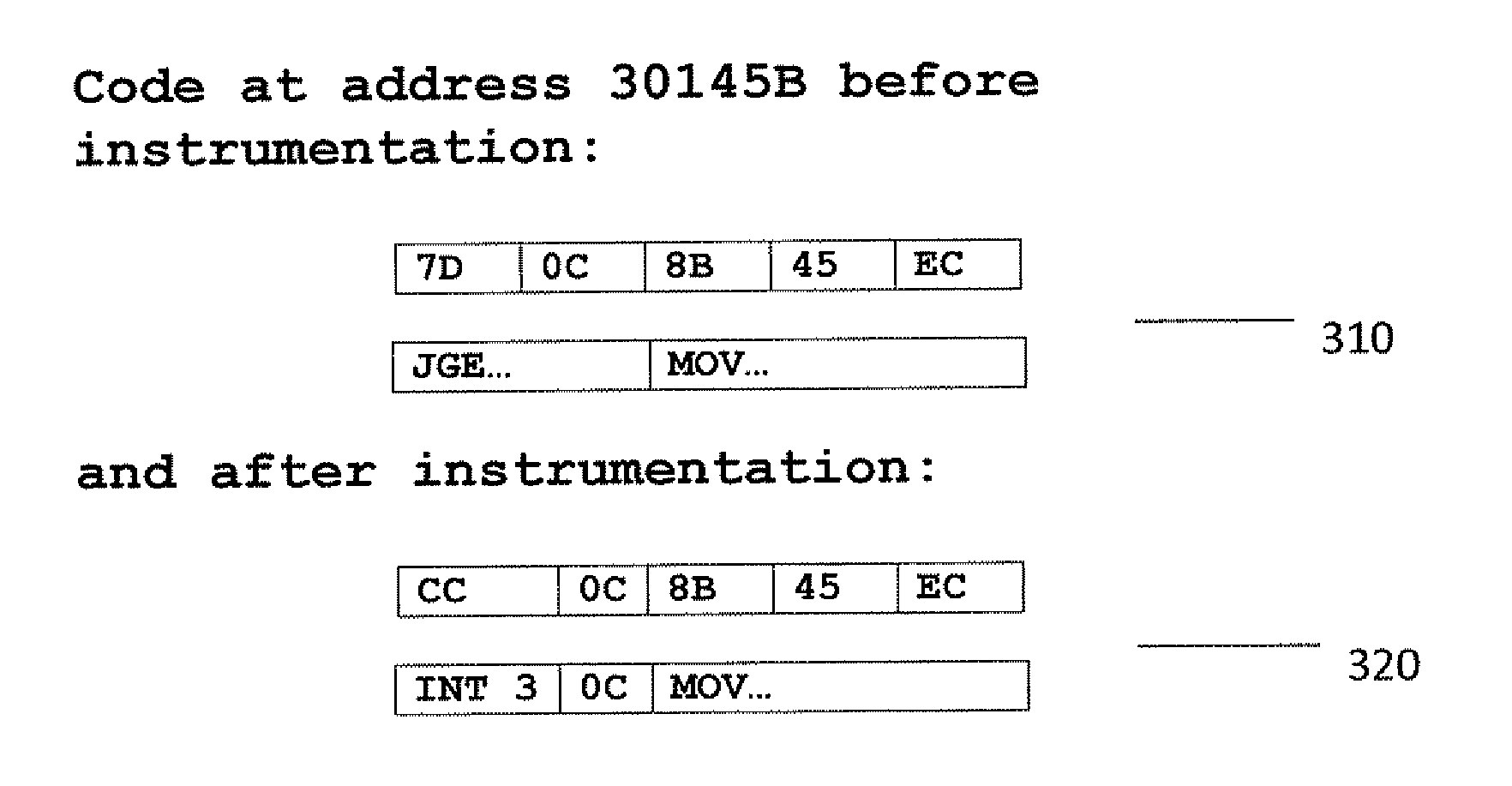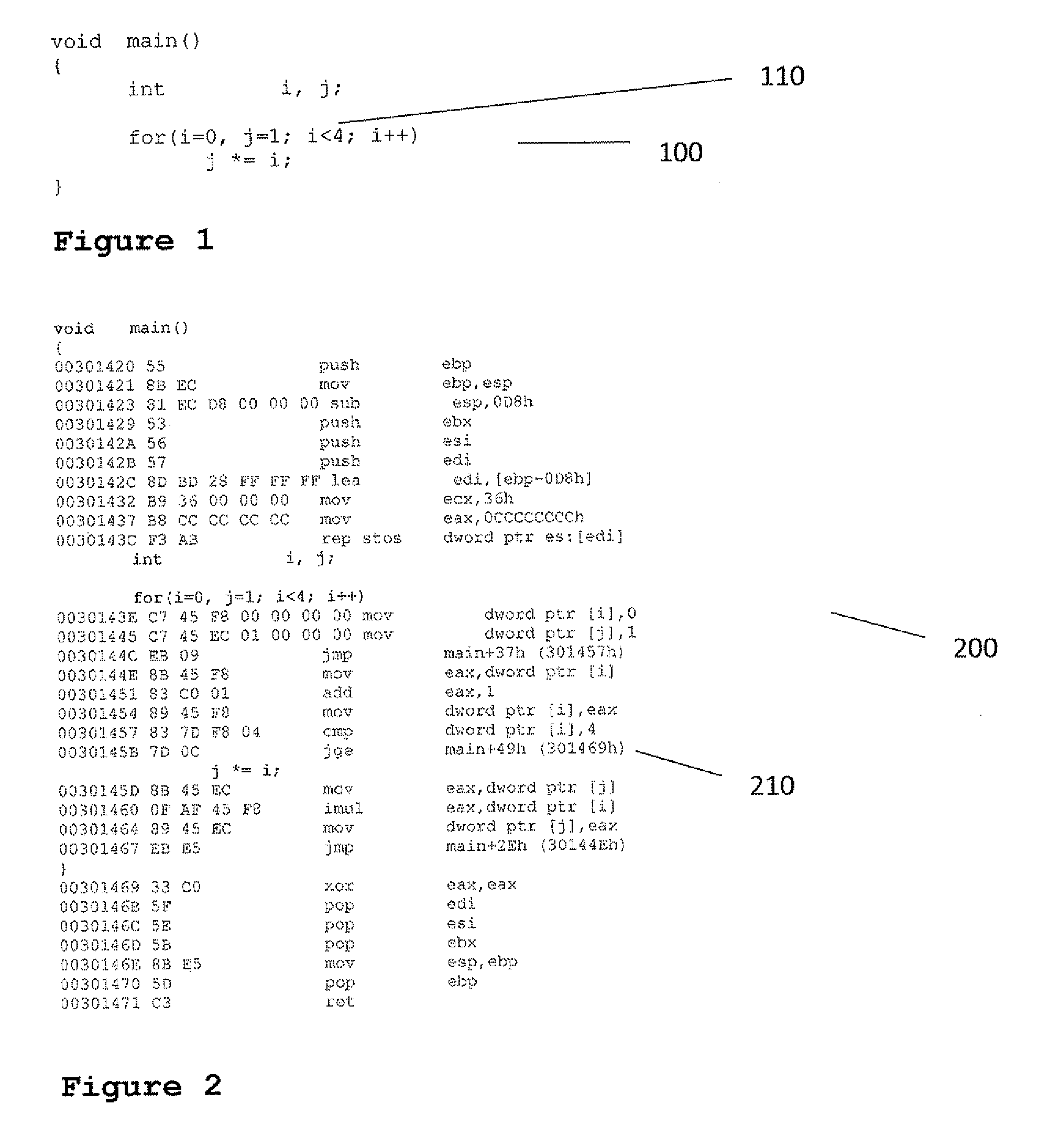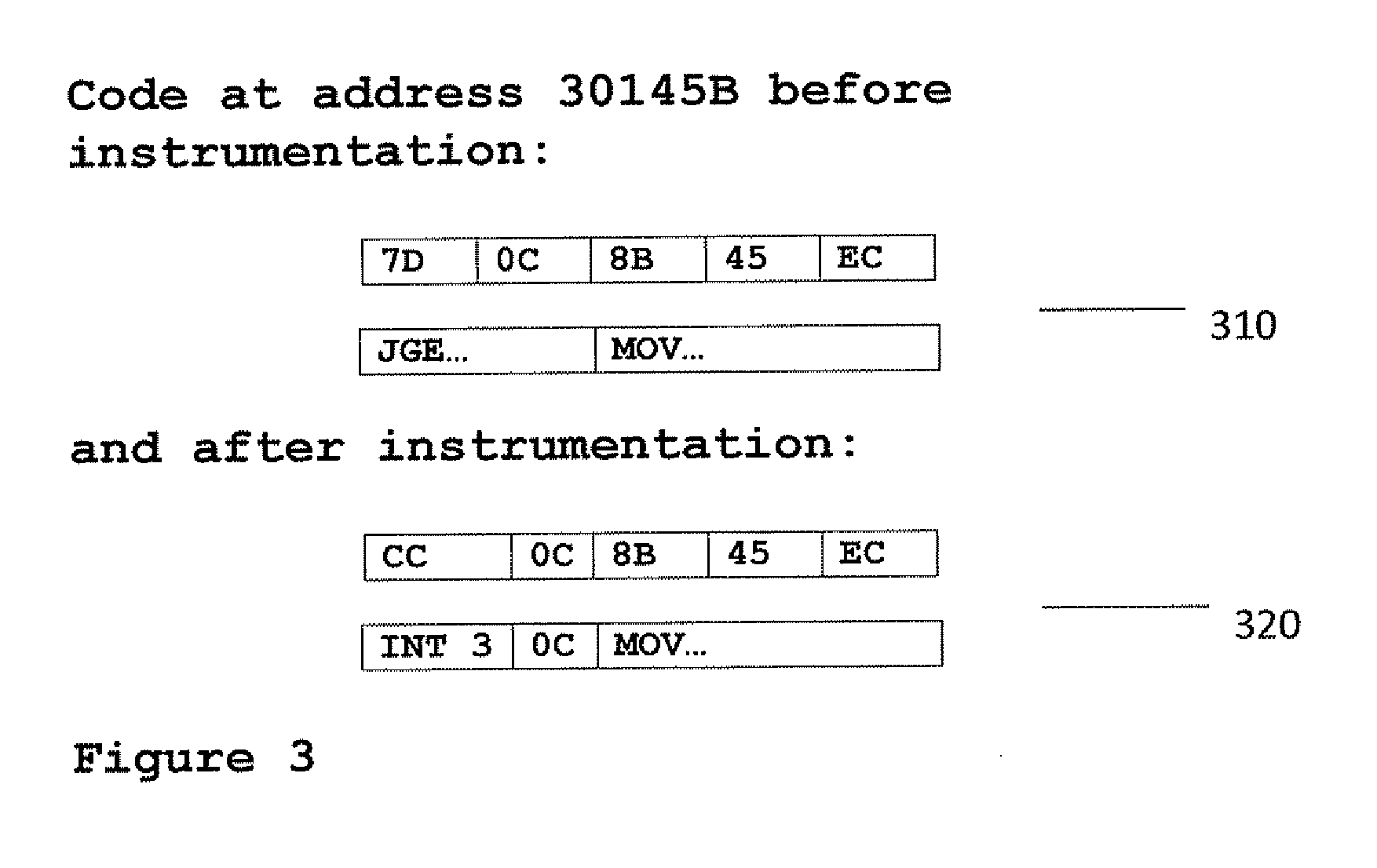Efficient recording and replaying of the execution path of a computer program
a computer program and execution path technology, applied in the field of monitoring the execution path of computer programs, can solve the problem of relatively low performance penalty and achieve the effect of reducing performance penalty and storage consumption
- Summary
- Abstract
- Description
- Claims
- Application Information
AI Technical Summary
Benefits of technology
Problems solved by technology
Method used
Image
Examples
Embodiment Construction
[0035]The principles and operation of execution path recording according to the present invention may be better understood with reference to the drawings and the accompanying description.
[0036]A program executable file is loaded into the computer memory by the Operating System (OS) loader and starts running in the context of one or more threads of a process. The process is executed from its starting address (which is defined in the program executable file) up to a normal / abnormal exit or until terminated manually. The present invention defines an efficient method for monitoring and recording the sequence of the executed instructions. This method is implemented by a monitoring program that controls the execution of the recorded program based on the following steps:
[0037]a) Loading the program into memory and creating its process in suspend mode
[0038]b) Finding the set of the recording points (their addresses in the process memory)
[0039]c) Instrumentation of the original code at the a...
PUM
 Login to View More
Login to View More Abstract
Description
Claims
Application Information
 Login to View More
Login to View More - R&D
- Intellectual Property
- Life Sciences
- Materials
- Tech Scout
- Unparalleled Data Quality
- Higher Quality Content
- 60% Fewer Hallucinations
Browse by: Latest US Patents, China's latest patents, Technical Efficacy Thesaurus, Application Domain, Technology Topic, Popular Technical Reports.
© 2025 PatSnap. All rights reserved.Legal|Privacy policy|Modern Slavery Act Transparency Statement|Sitemap|About US| Contact US: help@patsnap.com



